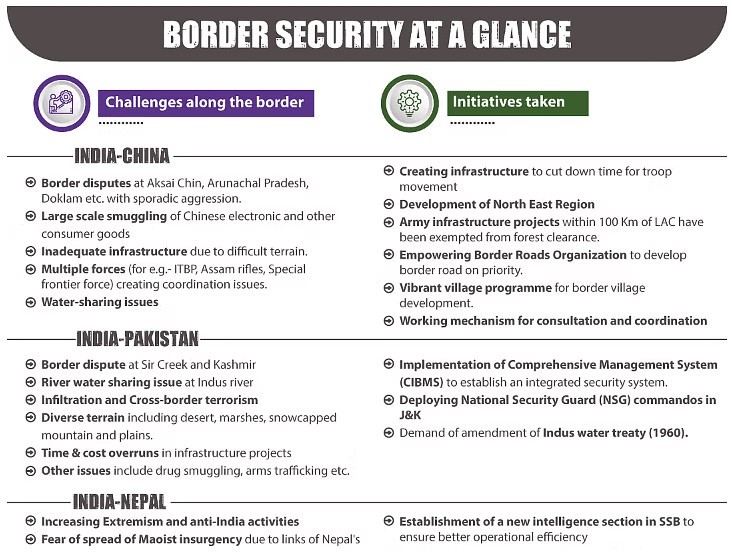Preventing Terror Infiltration Needs Smart Border Strategy
Preventing Terror Infiltration Needs Smart Border Strategy
Why in the News ?
Following the Pahalgam terror attack, security forces face challenges in tracking terrorists hiding in J&K’s forests. Experts highlight the urgent need for a stronger counter-infiltration grid, smart fencing, and improved surveillance to prevent terrorists from entering India altogether.
Infiltration: A Growing Security Concern
- Five terrorists responsible for the Pahalgam killings escaped into the dense Pir Panjal forests, making tracking difficult.
- These jungles have poor visibility and rugged terrain, demanding strong technical and human intelligence.
- Pakistan-trained terrorists, often unconnected to locals and using advanced communication gear, evade detection.
- Over 50 Indian soldiers have died in recent years during such operations in Poonch, Rajouri, and Kathua.
Counter-Infiltration Measures and Fence Status
- The India-Pakistan border is mostly fenced, but riverine gaps and snowy regions remain vulnerable.
- Post-2016, the Comprehensive Integrated Border Management System (CIBMS) introduced tech like infrared sensors, aerostats, radars, and fiber optics.
- Yet, issues like snow damage, weather, and lack of power hinder fence repair and surveillance.
- Despite announcements, CIBMS progress has been slow, with the new deadline now pushed to December 2025.
The Way Forward: Smarter Surveillance
- Security experts advocate smart fences with real-time alerts for any breach.
- Needs include snow-resistant infrastructure, tunnel detection tech, and 24×7 aerial surveillance.
- Human vigilance remains vital in harsh terrains; technology alone can’t prevent infiltration.
- Investment in resilient infrastructure and innovation is key to securing the border.




